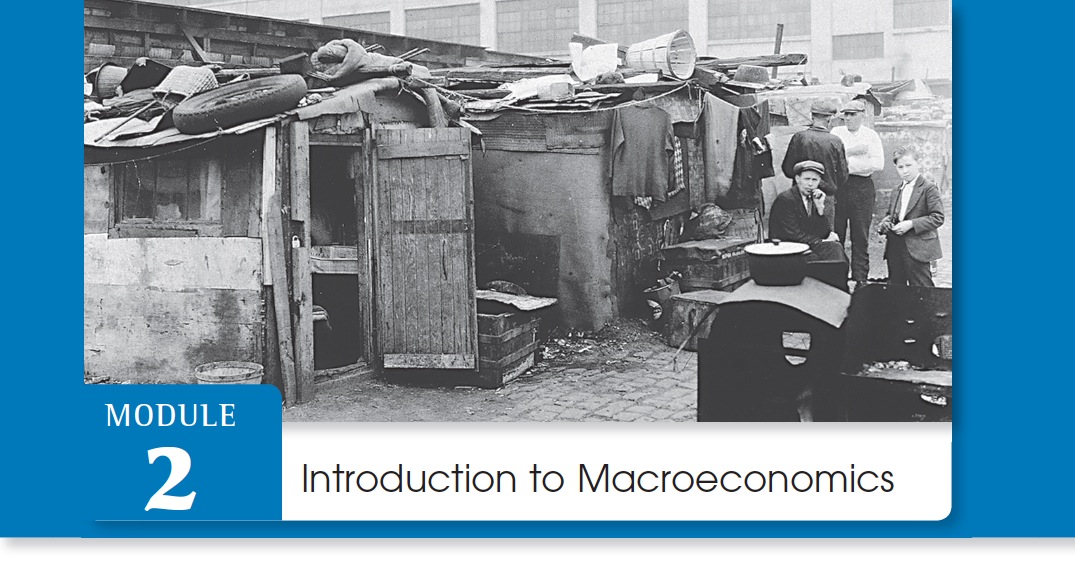Chapter Introduction
MODULE 2
Introduction to Macroeconomics

In this Module, you will learn to:
• Explain what a business cycle is and why policy makers seek to diminish the severity of business cycles
• Describe how employment and unemployment are measured and how they change over the business cycle
• Define aggregate output and explain how it changes over the business cycle
• Define inflation and deflation and explain why price stability is preferred
• Explain how economic growth determines a country’s standard of living
• Summarize the crucial role of models—
Today many people enjoy walking, biking, and horseback riding through New York’s beautiful Central Park. But in 1932 there were many people living there in squalor. At that time, Central Park contained one of the many “Hoovervilles”—the shantytowns that had sprung up across America as a result of a catastrophic economic slump that had started in 1929. Millions of people were out of work and unable to feed, clothe, and house themselves and their families. Beginning in 1933, the U.S. economy would stage a partial recovery. But joblessness stayed high throughout the 1930s—
Why the name “Hooverville”? These shantytowns were named after President Herbert Hoover, who had been elected president in 1928. When the Depression struck, people blamed the president: neither he nor his economic advisers seemed to understand what had happened or to know what to do to improve the situation. At that time, the field of macroeconomics was still in its infancy. It was only after the economy was plunged into catastrophe that economists began to closely examine how the macroeconomy works and to develop policies that might prevent such disasters in the future. To this day, the effort to understand economic slumps and find ways to prevent them is at the core of macroeconomics.
In this module, we will begin to explore the key features of macroeconomic analysis. We will look at some of the field’s major concerns, including business cycles, employment, aggregate output, price stability, and economic growth.